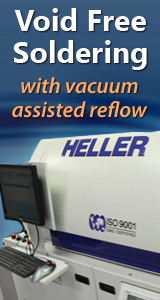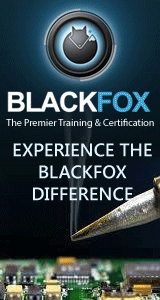Printed Circuit Board Assembly & PCB Design Forum
SMT electronics assembly manufacturing forum.
- SMTnet
- »
- Electronics Forum
- »
- Underscreen cleaning cycles
Underscreen cleaning cycles
Views: 6568
![]() I was just wondering what everyone is using for a standard c...
- Apr 26, 2012
by
bobsavenger
I was just wondering what everyone is using for a standard c...
- Apr 26, 2012
by
bobsavenger
![]()
![]()
![]() By default we clean after 10 cycles. Some boards are poorly...
- Apr 26, 2012
by
jdengler
By default we clean after 10 cycles. Some boards are poorly...
- Apr 26, 2012
by
jdengler
![]()
![]()
![]() Stencil Cleaning [AIM LeadFree]
* Stencils should be cleane...
- Apr 26, 2012
by
davef
Stencil Cleaning [AIM LeadFree]
* Stencils should be cleane...
- Apr 26, 2012
by
davef
![]()
![]()
![]() You may also look into a product called Nano Protek. This i...
- May 11, 2012
by
stentech
You may also look into a product called Nano Protek. This i...
- May 11, 2012
by
stentech
![]()
![]()
![]() We also go with 10 cycles, adjusting from that point if need...
- May 11, 2012
by
Chris
We also go with 10 cycles, adjusting from that point if need...
- May 11, 2012
by
Chris
![]()
![]()
![]() Regarding nano coatings : Nano coatings are susceptible to w...
- May 11, 2012
by
Sr. Tech
Regarding nano coatings : Nano coatings are susceptible to w...
- May 11, 2012
by
Sr. Tech
![]()
![]()
![]() I am not aware of the Nano protek flaking off. However I do ...
- May 11, 2012
by
stentech
I am not aware of the Nano protek flaking off. However I do ...
- May 11, 2012
by
stentech
![]()
![]()
![]() I'm not sure why anyone would pay extra for FG (fine grain) ...
- May 17, 2012
by
ScottE
I'm not sure why anyone would pay extra for FG (fine grain) ...
- May 17, 2012
by
ScottE
![]()
![]()
![]() there are many reasons why FG and Nano are used and many pap...
- May 17, 2012
by
stentech
there are many reasons why FG and Nano are used and many pap...
- May 17, 2012
by
stentech
![]()
![]()
![]() I don't have an opinion on nano coatings since I haven't tri...
- May 17, 2012
by
ScottE
I don't have an opinion on nano coatings since I haven't tri...
- May 17, 2012
by
ScottE
![]()
![]()
![]() Hi again quickly. Anyone need a sample let me know ..no char...
- May 17, 2012
by
stentech
Hi again quickly. Anyone need a sample let me know ..no char...
- May 17, 2012
by
stentech
![]()
- SMTnet
- »
- Electronics Forum
- »
- Underscreen cleaning cycles






